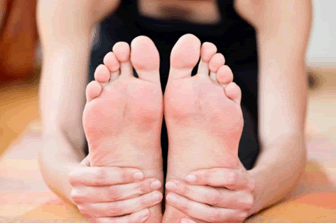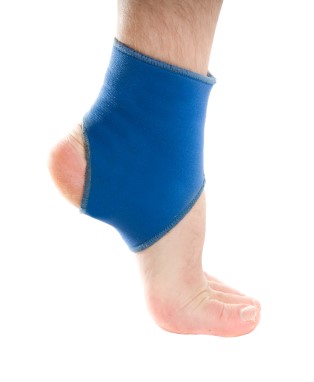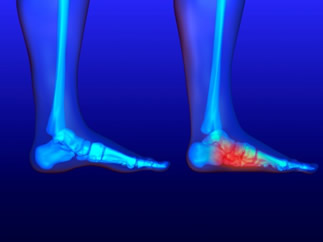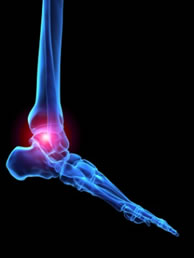Blog
Michigan State Spartans Lourawls Nairn Has Plantar Fasciitis
 Michigan State Spartans Sophomore guard Lourawls Nairn Jr. may be missing out on potential games this season as he suffers from plantar fasciitis in his right heel. Nairn has so far not missed any games due to the injury, but has to wear a walking boot when he’s outside of the court. Nairn missed the game against Wisconsin, but had played 33 consecutive games for the team. The injury was getting worse and head coach Tom Izzo decided to have Nairn sit out until Nairn can further recover.
Michigan State Spartans Sophomore guard Lourawls Nairn Jr. may be missing out on potential games this season as he suffers from plantar fasciitis in his right heel. Nairn has so far not missed any games due to the injury, but has to wear a walking boot when he’s outside of the court. Nairn missed the game against Wisconsin, but had played 33 consecutive games for the team. The injury was getting worse and head coach Tom Izzo decided to have Nairn sit out until Nairn can further recover.
Plantar fasciitis can be very painful and inconvenient. If you are experiencing heel pain or symptoms of plantar fasciitis, consult with Dr. Michael E. Newman of Pennsylvania. Our doctor will assist you with all of your foot and ankle needs.
What is Plantar Fasciitis?
Plantar fasciitis is the inflammation of the thick band of tissue that runs along the bottom of your foot, known as the plantar fascia, and causes mild to severe heel pain.
What Causes Plantar Fasciitis?
· Excessive running
· Non-supportive shoes
· Overpronation
· Repeated stretching and tearing of the plantar fascia
How Can It Be Treated?
· Conservative measures – anti-inflammatories, ice packs, stretching exercises, physical therapy, orthotic devices
· Shockwave therapy – sound waves are sent to the affected area to facilitate healing and are usually used for chronic cases of plantar fasciitis
· Surgery – usually only used as a last resort when all else fails. The plantar fascia can be surgically detached from the heel
While very treatable, plantar fasciitis is definitely not something that should be ignored. Especially in severe cases, speaking to your doctor right away is highly recommended to avoid complications and severe heel pain. Your podiatrist can work with you to provide the appropriate treatment options tailored to your condition.
If you have any questions please feel free to contact our offices located in Plymouth Meeting and Ambler, PA. We offer the newest diagnostic tools and technology to treat your foot and ankle needs.
Carmelo Anthony suffers Sprained Ankle
 Carmelo Anthony of the Knicks was unable to continue playing in the game against the Boston Celtics following a sprained ankle injury. He had to have his right ankle inspected and treated following the event of his injury. Anthony has also sat out the game against Cleveland in December, and is predicted to have to sit out for recovery for about three days before the Nets game.
Carmelo Anthony of the Knicks was unable to continue playing in the game against the Boston Celtics following a sprained ankle injury. He had to have his right ankle inspected and treated following the event of his injury. Anthony has also sat out the game against Cleveland in December, and is predicted to have to sit out for recovery for about three days before the Nets game.
Ankle sprains are common, but need immediate attention. If you are experiencing pain, consult with Dr. Michael E. Newman of Pennsylvania. Our doctor will assist you with all of your foot and ankle needs.
How Does an Ankle Sprain Occur?
Ankle sprains take place when the ligaments in your ankle are torn or stretched beyond their limits. There are multiple ways that the ankle can become injured, including twisting or rolling over onto your ankle, putting undue stress on it, or causing trauma to the ankle itself.
What are the Symptoms?
- Mild to moderate bruising
- Limited mobility
- Swelling
- Discoloration of the skin (depending on severity)
Preventing a Sprain
- Wearing appropriate shoes for the occasion
- Stretching before exercises and sports
- Knowing your limits can aid in prevention
Treatment of a Sprain
Treatment of a sprain depends on the severity. Many times, people are told to rest and remain off their feet completely, while others are given an air cast. If the sprain is very severe, surgery may be required.
If you have suffered an ankle sprain previously, you may want to consider additional support such as a brace and regular exercises to strengthen the ankle.
If you have any questions please feel free to contact our offices located in Plymouth Meeting and Ambler, PA. We offer the newest diagnostic tools and technology to treat your foot and ankle needs.
“Fallen Arches”: Treat Flat Feet Early On
 Also known as fallen arches, flat feet can become problematic when you stand or walk. Flat feet can develop as a hereditary condition but can also be caused by not properly maintaining your feet. Poorly-fitting shoes, obesity, or constant pressure on the feet can all lead to the development of flat feet. Flat feet can progress over time and can result in pain or muscular and structural imbalance. Symptoms of flat feet include your feet getting tired often, toes pointing outward, bunion growth, or any other physical irregularity about your feet. Treatment for flat feet include pain medication, custom orthotics, and therapy.
Also known as fallen arches, flat feet can become problematic when you stand or walk. Flat feet can develop as a hereditary condition but can also be caused by not properly maintaining your feet. Poorly-fitting shoes, obesity, or constant pressure on the feet can all lead to the development of flat feet. Flat feet can progress over time and can result in pain or muscular and structural imbalance. Symptoms of flat feet include your feet getting tired often, toes pointing outward, bunion growth, or any other physical irregularity about your feet. Treatment for flat feet include pain medication, custom orthotics, and therapy.
Most arches will develop in children after a certain age. If you have any concerns about your feet or ankles, visit Dr. Michael E. Newman of Pennsylvania. Our doctor will assess your injury and provide you with quality treatment.
What are Flat Feet?
Flat feet are a condition in which the arch of the foot is depressed and the sole of the foot is almost completely in contact with the ground. Standing about 20-30% of the population generally has flat feet because their arch never formed during growth.
Conditions & Problems:
Having flat feet makes it difficult to run or walk because of the stress placed on the ankles.
Alignment – The general alignment of your legs can be disrupted, because the ankles move inward which can cause major discomfort.
Knees – if you have complications with your knees, flat feet can be a contributor to arthritis in that area.
Symptoms:
Pain around the heel or arch area
Trouble standing on the tip toe.
Swelling around the inside of the ankle.
Flat look to one or both feet.
Having your shoes feel uneven when worn
Treatment:
If you are experiencing pain and stress on the foot you may weaken the posterior tibial tendon, which runs around the inside of the ankle.
If you have any questions please feel free to contact our offices located in Plymouth Meeting and Ambler, PA. We offer the newest diagnostic tools and technology to treat your foot and ankle needs.
Certain Superfoods can help ease Arthritis
 According to research conducted in the UK, a diet rich in cherries, ginger, tumeric, kale, garlic, olive oil, sardines, and Brazil nuts can reduce the pain of inflammation in arthritis patients. These so called “superfoods” in addition to the proper care and medication can have major positive differences in arthritis progression. The reason these foods work so well is due to their richness in antioxidants, anthocyanins, and damage limiting enzymes.
According to research conducted in the UK, a diet rich in cherries, ginger, tumeric, kale, garlic, olive oil, sardines, and Brazil nuts can reduce the pain of inflammation in arthritis patients. These so called “superfoods” in addition to the proper care and medication can have major positive differences in arthritis progression. The reason these foods work so well is due to their richness in antioxidants, anthocyanins, and damage limiting enzymes.
Arthritis can be a difficult condition to live with. If you are seeking treatment, visit Dr. Michael E. Newman of Pennsylvania. Our doctor will assess your injury and provide you with quality treatment.
Arthritic Foot Care
Arthritis is a joint disorder that involves inflammation of different joints in your body, such as in your feet. Arthritis is often caused by a degenerative joint disease and causes mild to severe pain in all affected areas. On top of this, swelling and stiffness in the affected joints can also be a common symptom of arthritis.
In many cases, wearing ill-fitting shoes can worsen the effects and pain of arthritis. Wearing shoes that have a lower heel and extra room can help your feet feel more comfortable. In cases of rheumatoid arthritis, the arch in your foot may become problematic. Buying shoes with proper arch support that contour to your feet can help immensely.
Alleviating Arthritic Pain
- Exercises that stretch the foot can prevent further pain and injury and increase mobility
- Most of the pain can be alleviated with anti-inflammatory drugs, heat, and topical medications
- Massages can help to temporarily alleviate pain.
It is best to see your doctor for the treatment that is right for your needs and symptoms. Conditions vary, and a podiatrist can help you determine the right method of care for your feet.
If you have any questions please feel free to contact our offices located in Plymouth Meeting and Ambler, PA. We offer the newest diagnostic tools and technology to treat your foot and ankle needs.
